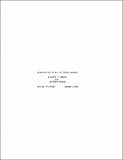| dc.description.abstract | This paper develops a rule for calculating a discount rate to value risky
projects. The rule assumes that the asset risk can be measured by a single
index (e.g., beta), but makes no other assumptions about specific form of the
asset pricing model. The rule works for all equilibrium theories of debt and
taxes. The rule works because it treats all projects as combinations of two
assets: Treasury bills and the market portfolio. We know how to value each of
these assets under any theory of debt and taxes and under any assumption about
the slope and intercept of the market line for equity securities.
Given the corporate tax rate, the interest rate on Treasury bills, and
the expected rate of return on the market, we can calculate the cost of
capital for a feasible financing strategy. The firm finances the project with
equity and debt in the proportions beta and (1- beta). Value increasing projects
could be completely financed using this strategy. The weighted average cost
of financing this project provides a discount rate that values the project
correctly. | en |
